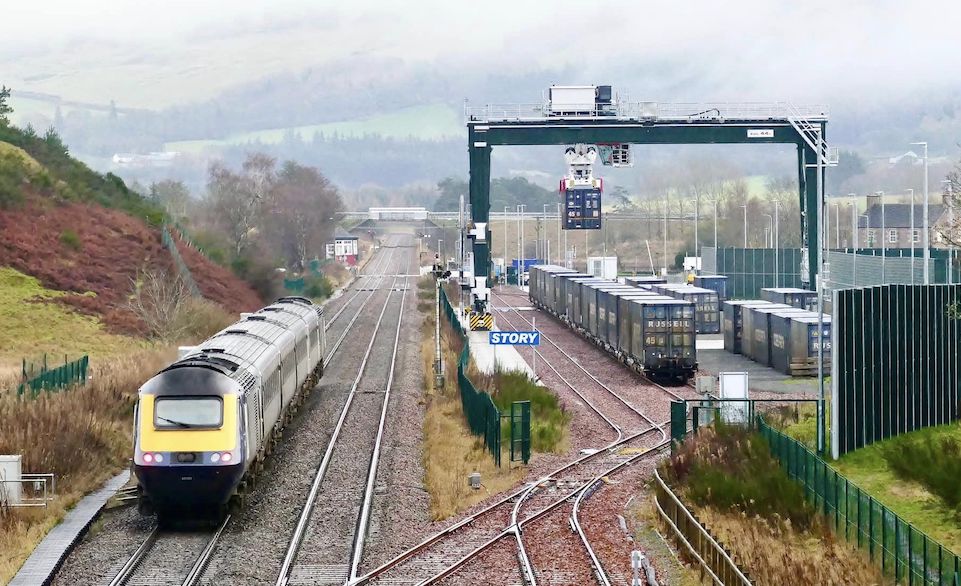Concerns have been voiced in the Scottish Parliament over rail freight performance. The transport spokesman for the main opposition party is concerned by a sharp fall in volume. Graham Simpson of the Scottish Conservative Party has raised the issue in a report presented to the parliament in Edinburgh.
The UK and Scottish Governments should take action to increase the amount of goods transported by rail, say the Scottish Conservatives. The party’s spokesdecliniman, Graham Simpson, said a reduction in rail freight traffic in Scotland of a quarter in the last 18 months shows the need for an urgent government response. Under the UK’s devolved government structure, transport policy is within the remit of the Scottish government and its counterparts in Wales and Northern Ireland.
Costs of rail freight are far too high
Rail freight is on the main line of Scottish politics. The publication of a report by the official opposition party, the Scottish Conservatives, has expressed concerns over a perceived decline in rail freight. That comes in the face of Government directives on carbon reduction and ambitions for a net zero economy. “Recent trends for the rail freight sector in Scotland are not good,” Graham Simpson, MSP (Member of the Scottish Parliament) argues. “Figures suggest that the volume of freight moved by rail in Scotland has fallen by 25 per cent in the past 18 months. I am proposing some ways to improve and develop this important but often overlooked aspect of our transport network.”

Simpson has published a report, “Rail Freight in Scotland”, on the state of the sector. In that document, he calls for a raft of improvements to stimulate growth, including for track capacity to be improved and for investment in freight infrastructure. “The Scottish government withdrew its £700,000 (€820,000) budget for the Modal Shift Revenue Support grant this year,” says Simpson, referring to a scheme intended to help offset the cost of establishing rail infrastructure that demonstrably reduces road traffic. “While that is currently being covered by the UK government, the costs of rail freight are far too high. The Scottish government should fund and preserve this grant and support new rail freight services with the revenue and capital costs of equipment.”
Capacity planning on key routes is required
The report argues that the infrastructure for rail freight in Scotland is insufficient, especially beyond the Central Belt. “Any market interest to establish new freight services to Aberdeen or Inverness is frustrated by limitations on the length and volume of freight services that can be introduced into the current rail timetable,” says the report. “There are also restrictions on the network’s capacity to accommodate containers on standard rail wagons through tunnels and under bridges.” The report does note that there are long-term plans to improve capacity, but these plans do not have current funding.

The concentration of freight assets in the Central Belt of Scotland is a concern for Simpson. The region, broadly defined as the axis between Glasgow and Edinburgh, is home to most of the Scottish population but is only a small fraction of the overall land area. It does not include the border crossings with England nor the potentially significant traffic-generating areas of Aberdeen and Inverness. “We also need more infrastructure for rail freight in Scotland, especially beyond the Central Belt,” says Simpson. “Further capacity planning on key routes is required to increase flow. Better use could be made of existing infrastructure, including under-utilised terminals.”
Government needs to take more strategic action
The report does make several recommendations and requests, to help achieve an overall goal of increasing rail freight – which, as it stands, conveys only a small proportion of goods in Scotland. “The Scottish government should be taking a more proactive role to support and co-ordinate joint working within the rail freight sector,” says Graham Simpson. “This should include engaging with logistics companies and operators to map out new traffic and demonstrating leadership by putting more public sector goods onto rail.”
The Rail Freight in Scotland report concludes that the frame of reference of the Scottish Freight Joint Board [convened by the non-governmental agency Transport Scotland] could also be expanded to offer information to industry and examine possible opportunities. “If we want to reach net zero and move goods around the country more efficiently, then we need to get more onto rail,” observes Simpson in conclusion. “While setting targets is one piece of this puzzle, the Scottish government needs to take more strategic action to do this. My report sets out some ways that this could be achieved.”